Jambu Tree In Great Cosmogonic Forest Of Sacred Land Of Jambudvipa In Buddhist Mythology
A. Sutherland - AncientPages.com - Many forests of fabulous fame have been mentioned in books and described in classical writings.
Myths and legends say that Jambudvipa is one of the four continents, situated south of Mount Kailash (Mount Meru in Buddhist texts), a mountain square with four sides, more prominent at the top than the top at the bottom.
 The four island-continents, which surround Mount Meru according to the cosmology of the Buddhist teachings. A representation of our world system with Jambudvipa is pictured at the bottom center of the image. Source
The four island-continents, which surround Mount Meru according to the cosmology of the Buddhist teachings. A representation of our world system with Jambudvipa is pictured at the bottom center of the image. Source
"In the district of Himalaya, there stands the sacred mountain Kailash from which the waters of our world (the Indian subcontinent) flow down. There, on the shore of lake Anavatapta ("never warm") now identified with Manasarovar), stands the sacred Jambu tree from which our world derives its ancient name of Jambudvipa, "the isle of Jambu". Mong the twenty-four places, Mount Kailash is possibly the most famous of all, a favored destination of pilgrims from every school. Known among Hindus as the sacred abode of Shiva, this mountain has been the site of countless legends and miraculous events as recorded in the guidebooks of Buddhist and non-Buddhists alike...´" 1
Jambudvipa - of trapezoidal shape or resembling the shape of an ax-head - is inhabited by rakshasa demons. The southernmost of the four great continents of traditional Buddhist mythology is referred to as the island of the Jambu tree corresponding to the known world at the time. Most probably, it was identified with the Indian subcontinent and south-east Asia. All the other island continents are inhabited by human beings of different characteristics, lifestyles, and lifespans.
The cosmologies of Hinduism, Buddhism, and Jainism refer to the so-called 'jambudvipa,' which means "the land of Jambu trees." The Jambu tree, from which the continent takes its name, is a vast tree believed to be located in the Himalayan region.
According to tradition, Buddhas arise only on this continent, along with the so-called Universal Rulers (chakravartin). The latter represent ideal kings, who are divinely predestined to restore temporal dharma, a concept of the religious and moral law governing individual conduct. It is also one of the four ends of life.
The universe, according to Jainism, has the shape of a triangle surmounted by a hexagon. Between the two exists the Madhya-Loka where the Jambudvipa continent is located. Credit: Shree Diwakar Prakashan - Public Domain
The chakravartin has enormous power and rules over the entire earth, based on the concept dated to the times of the Maurya Empire (322 BC – 184 BC), an wide-ranging, Iron Age historical power of South Asia, founded by Chandragupta Maurya. In the sacred Puranas (in Sanskrit: "ancient, old"), chakravartin appears at certain essential moments in the cosmic cycle, and even different rulers related to historical time used to claim the title of a chakravartin.
However, "a future chakravartin is said to be born with a long list of auspicious and infallible signs, such as webbed fingers and chakras (1) on the palms of his hands, all of which are supposed to denote physical and spiritual perfection. For the Buddhists and Jains, the chakravartin is the temporal equivalent of a Buddha or a Tirthankara," 2, a savior and spiritual teacher of the dharma (righteous path).
Hindu beliefs tell of a vast cosmogonic forest full of the most remarkable flowers and plants. There is a field of flowers of light and a sacred plant of immortality in this celestial realm. From this plant, Dhanvantari - the divine physician of the gods, regarded as an incarnation of Lord Vishnu, the God of protection and sustenance - extracts the divine ambrosia.
Another sacred plant in the forest is the earlier mentioned mighty Jambu tree, which bears an immortal fruit as large as an elephant, resembling gold, and of which the seeds produce pure gold.
According to Buddhism's religious tradition, ordinary human beings represent one of the six classes of beings that live on any of four continents. The tradition continues that beings on each of these four continents remain unseen from each other and have to some extent different physical characteristics and lifespans.
It could suggest the shape of the coastline of southern India, which according to Indian Buddhists, has always been called Jambudvipa, extending 10,000 yojanas (one yojana is about 12–15 km) in extent or has a perimeter of 6,000 yojanas) to which can be added the southern coast of only 3 and 1/2 yojanas' length.
The continent takes its name from a giant evergreen Jambu tree, which grows in the middle of every continent. According to modern sources, the tree can reach up to 30 meters (98 ft) and live more than 100 years. Some assume the Jambu tree to be the rose-apple tree, as it was recently suggested, a plum tree.
However, another version of the Jambu tree story refers to the existence of only one Jambu tree. This tree is not visible to ordinary people but only to enlightened beings.
Written by - A. Sutherland - AncientPages.com Senior Staff Writer
Copyright © AncientPages.com All rights reserved. This material may not be published, broadcast, rewritten or redistributed in whole or part without the express written permission of AncientPages.com
Expand for references- Holm J, Bowker J., Sacred Place
2. W. J. Johnson, A Dictionary of Hinduism
Damien Keown, A Dictionary of Buddhism
Tibetan Buddhist Encyclopedia
More From Ancient Pages
-
 Pythagorean Cup Was A Practical Joke To Punish Greedy Drinkers And It Still Fools People
Ancient History Facts | Dec 18, 2020
Pythagorean Cup Was A Practical Joke To Punish Greedy Drinkers And It Still Fools People
Ancient History Facts | Dec 18, 2020 -
 When Did Humans Start Using Roads And What Civilization Built The First Paved Roads?
Archaeology | Oct 26, 2022
When Did Humans Start Using Roads And What Civilization Built The First Paved Roads?
Archaeology | Oct 26, 2022 -
 Mikoshi-Nyudo: Evil, Bald-Headed And Long-Necked Yokai Goblin In Japanese Folklore
Featured Stories | Sep 12, 2024
Mikoshi-Nyudo: Evil, Bald-Headed And Long-Necked Yokai Goblin In Japanese Folklore
Featured Stories | Sep 12, 2024 -
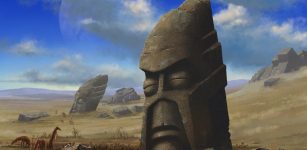 Easter Island May Offer Proof Of An Alien Apocalypse
Archaeology | Jun 7, 2018
Easter Island May Offer Proof Of An Alien Apocalypse
Archaeology | Jun 7, 2018 -
 DNA Study Of Controversial Ancient North American Mummies, Including The Spirit Cave Mummy Opens An Extraordinary Chapter In Human History
Archaeology | Nov 15, 2018
DNA Study Of Controversial Ancient North American Mummies, Including The Spirit Cave Mummy Opens An Extraordinary Chapter In Human History
Archaeology | Nov 15, 2018 -
 2,000-Year-Old Factory Producing Roman Fish Sauce Unearthed In Ashkelon, Israel
Archaeology | Jan 7, 2020
2,000-Year-Old Factory Producing Roman Fish Sauce Unearthed In Ashkelon, Israel
Archaeology | Jan 7, 2020 -
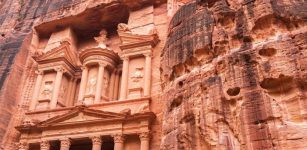 Researchers Sequenced 137 Human Genomes From The Middle East
Archaeology | Aug 6, 2021
Researchers Sequenced 137 Human Genomes From The Middle East
Archaeology | Aug 6, 2021 -
 On This Day In History: First War Of Scottish Independence: Battle of Bannockburn Begins – On June 23, 1314
News | Jun 23, 2016
On This Day In History: First War Of Scottish Independence: Battle of Bannockburn Begins – On June 23, 1314
News | Jun 23, 2016 -
 Psychedelic Blue Lotus Of Egypt – A Misunderstood Ancient Mystery?
Archaeoastronomy | Mar 19, 2025
Psychedelic Blue Lotus Of Egypt – A Misunderstood Ancient Mystery?
Archaeoastronomy | Mar 19, 2025 -
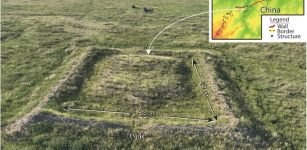 Mysterious Mongolian Arc Investigated By Scientists
Archaeology | Jan 2, 2024
Mysterious Mongolian Arc Investigated By Scientists
Archaeology | Jan 2, 2024 -
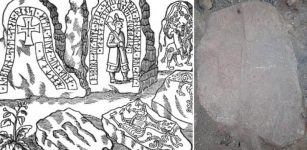 Unique Lost Runestone Of The Hunnestad Monument Finally Found After 300 Years In Sweden
Archaeology | Dec 16, 2020
Unique Lost Runestone Of The Hunnestad Monument Finally Found After 300 Years In Sweden
Archaeology | Dec 16, 2020 -
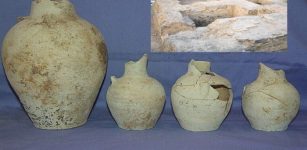 Stone Water Well Dated To Sassanid Era (224-651 CE) Unearthed In Isfahan Hills, Iran
Archaeology | Jun 26, 2020
Stone Water Well Dated To Sassanid Era (224-651 CE) Unearthed In Isfahan Hills, Iran
Archaeology | Jun 26, 2020 -
 Michael Scott – Fascinating Wizard Who Tutored The Holy Roman Emperor Frederick II
Featured Stories | Mar 7, 2025
Michael Scott – Fascinating Wizard Who Tutored The Holy Roman Emperor Frederick II
Featured Stories | Mar 7, 2025 -
 Is A Viking Settlement And Even Older Church Hidden Under St. Clement’s Church In Norway?
Archaeology | Apr 13, 2017
Is A Viking Settlement And Even Older Church Hidden Under St. Clement’s Church In Norway?
Archaeology | Apr 13, 2017 -
 On This Day In History: Captain James Cook Spotted The East Coast Of Australia – On Apr 19, 1770
News | Apr 19, 2016
On This Day In History: Captain James Cook Spotted The East Coast Of Australia – On Apr 19, 1770
News | Apr 19, 2016 -
 Archaeologists Uncover More Hidden Ancient Secrets In Saqqara, Egypt
Archaeology | Jan 6, 2025
Archaeologists Uncover More Hidden Ancient Secrets In Saqqara, Egypt
Archaeology | Jan 6, 2025 -
 Men Are Slowly Losing Their Y Chromosome – Is The Future Of Humanity In Danger?
Featured Stories | Nov 7, 2023
Men Are Slowly Losing Their Y Chromosome – Is The Future Of Humanity In Danger?
Featured Stories | Nov 7, 2023 -
 Archaeological Evidence Amazon Warrior Women Did Exist Found At Nakhchivan Necropolis, Azerbaijan
Archaeology | Mar 27, 2024
Archaeological Evidence Amazon Warrior Women Did Exist Found At Nakhchivan Necropolis, Azerbaijan
Archaeology | Mar 27, 2024 -
 Sunken 18th-Century British Warship HMS Tyger Found In The Dry Tortugas National Park, Florida
Archaeology | Mar 19, 2024
Sunken 18th-Century British Warship HMS Tyger Found In The Dry Tortugas National Park, Florida
Archaeology | Mar 19, 2024 -
 Skull Of Mysterious, Extinct Cousin Of Neanderthals Recreated From A Fossilized Finger
Archaeology | Sep 19, 2019
Skull Of Mysterious, Extinct Cousin Of Neanderthals Recreated From A Fossilized Finger
Archaeology | Sep 19, 2019

